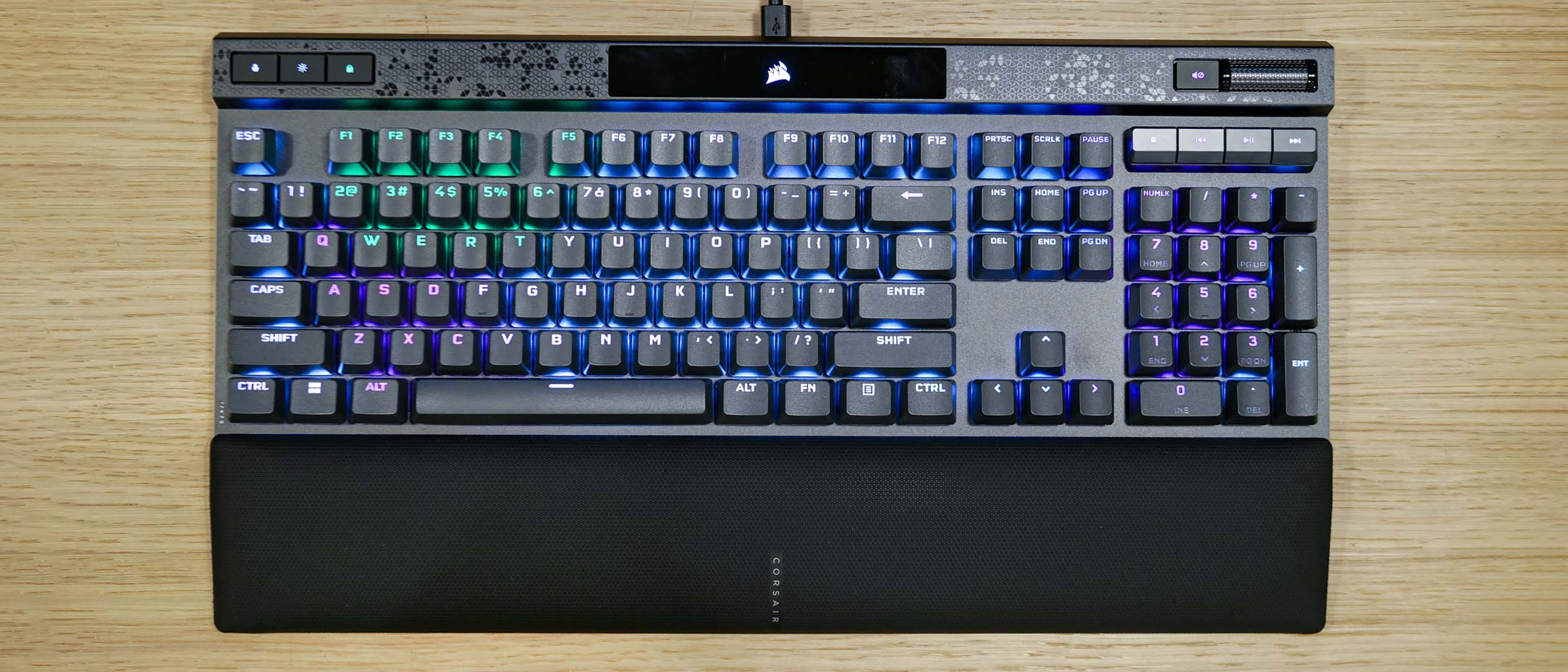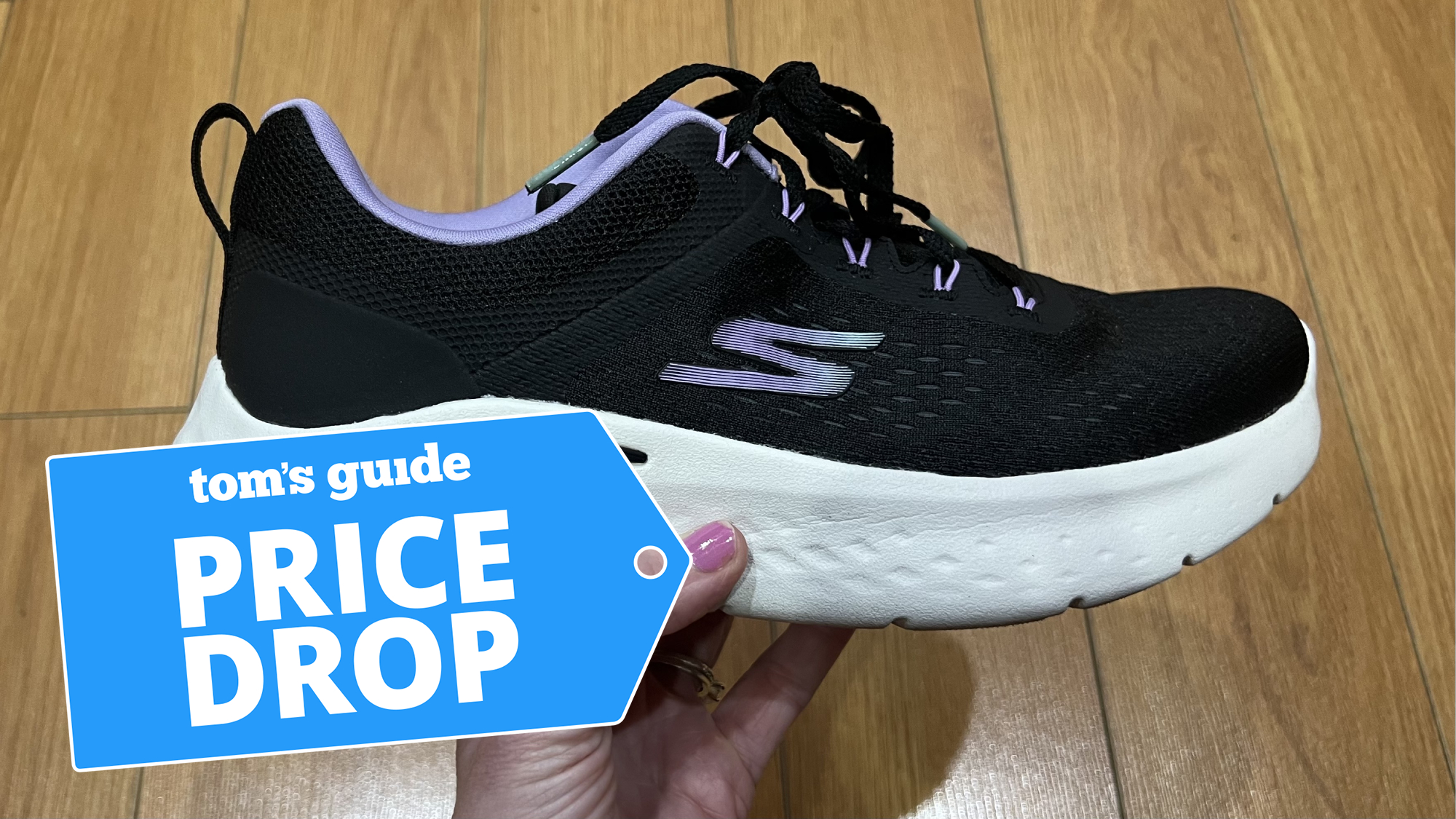Tom's Guide Verdict
The Corsair K70 Max might have a familiar design but its magnetic switches and high level of customization arguably make this the company’s best keyboard yet. If you can stomach its high price, this is the keyboard to get if you’re looking to elevate your PC gaming experience.
Pros
- +
Unique magnetic switches
- +
Sturdy build
- +
Comfortable wrist rest
- +
Highly programmable
- +
Excellent for gaming and typing
Cons
- -
Costs more than the competition
Why you can trust Tom's Guide
Key Type: Mechanical
Switch Type: Corsair MGX magnetic, linear
Illumination: Full RGB
Size: 17.4 x 6.54 x 1.54 inches
The Corsair K70 Max ($230) is a gaming keyboard that means business. Thanks to its magnetic switches, you’re not only able to adjust the keys’ actuation point, but you can also program two functions on the same key. Toss in sound-dampening technology, a durable aluminum frame and a memory foam wrist rest, and you have one of the best mechanical keyboards out there.
I’ve used the K70 Max as my primary work keyboard for the better part of two weeks and don’t see myself switching to another anytime soon. As a writer, I adore the smooth typing experience the linear switches and double-shot PBT keycaps provide. My fingers practically glide while typing on this device.
The comfortable wrist rest and insane level of customization are also strong bonuses. Yes, the $230 asking price isn’t cheap, but if you want a full-sized mechanical keyboard with all the trimmings, the Corsair K70 Max is worth your consideration.
Corsair K70 Max review: Price and availability
The Corsair K70 Max gaming keyboard is now available on Corsair’s website for $229. Right now, it’s the most expensive keyboard in the K70 lineup. Its signature new feature is magnetic switches that allow you to set two actuation points to a single key.
There are no other variants of the K70 Max, but other K70 keyboards include the Corsair K70 RGB Pro and Corsair K70 RGB TKL Champion Series — which cost $129 each.
Corsair K70 Max review: Design
The K70 Max looks identical to other full-sized Corsair keyboards like the Corsair K70 RGB Pro. Like that keyboard, this device features an elegant, brushed-metal black chassis that looks and feels premium. This isn’t a low-profile keyboard like the Logitech G915, but it’s also not raised too far off the ground in case you don’t want to use the included wrist rest.
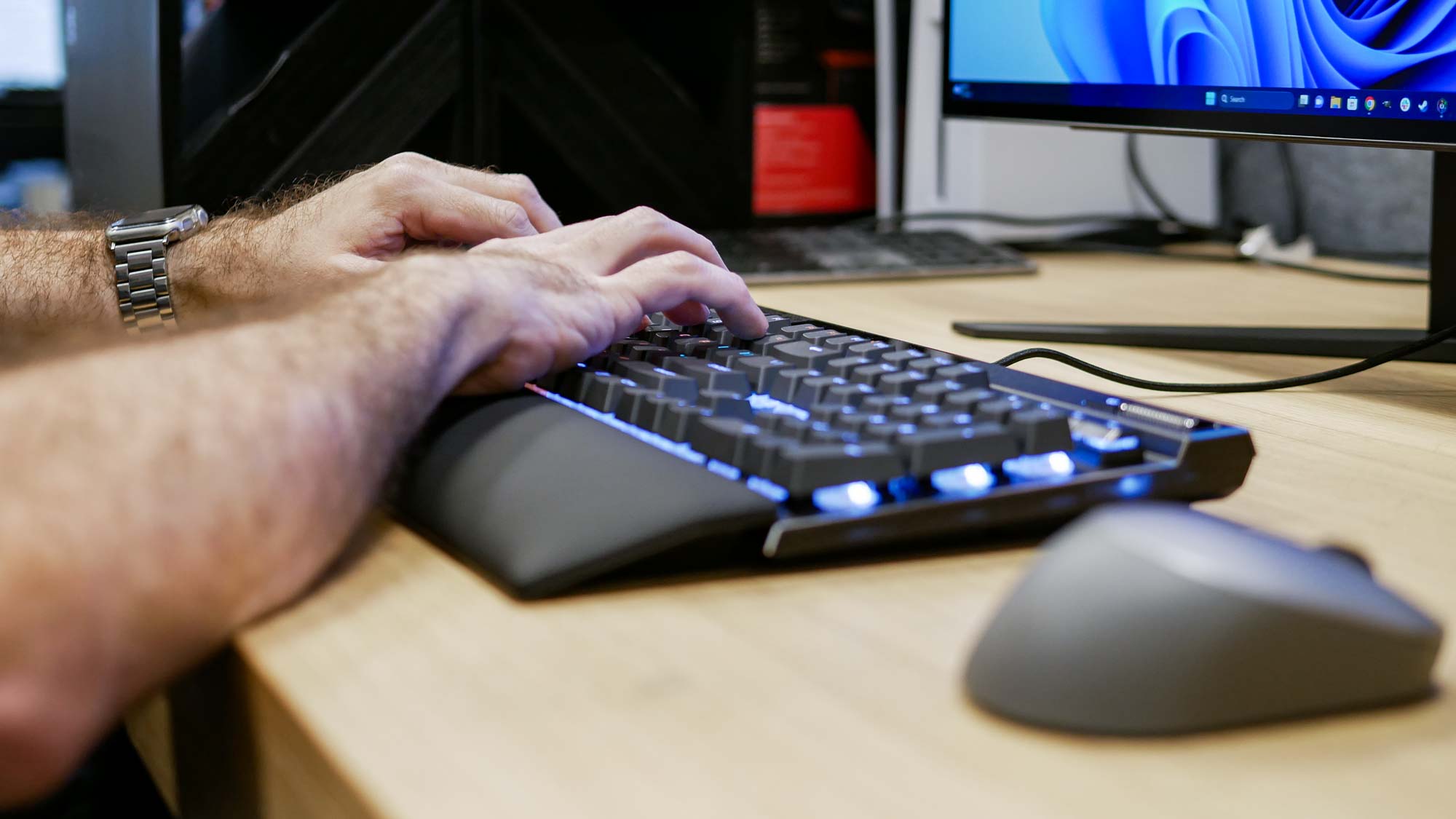
The slightly indented elevated keycaps feature full per-key RGB lighting, which you can program to your heart’s content. The keys’ PBT coating gives them a slightly rough texture when compared to the smooth ABT keycaps most keyboards have.
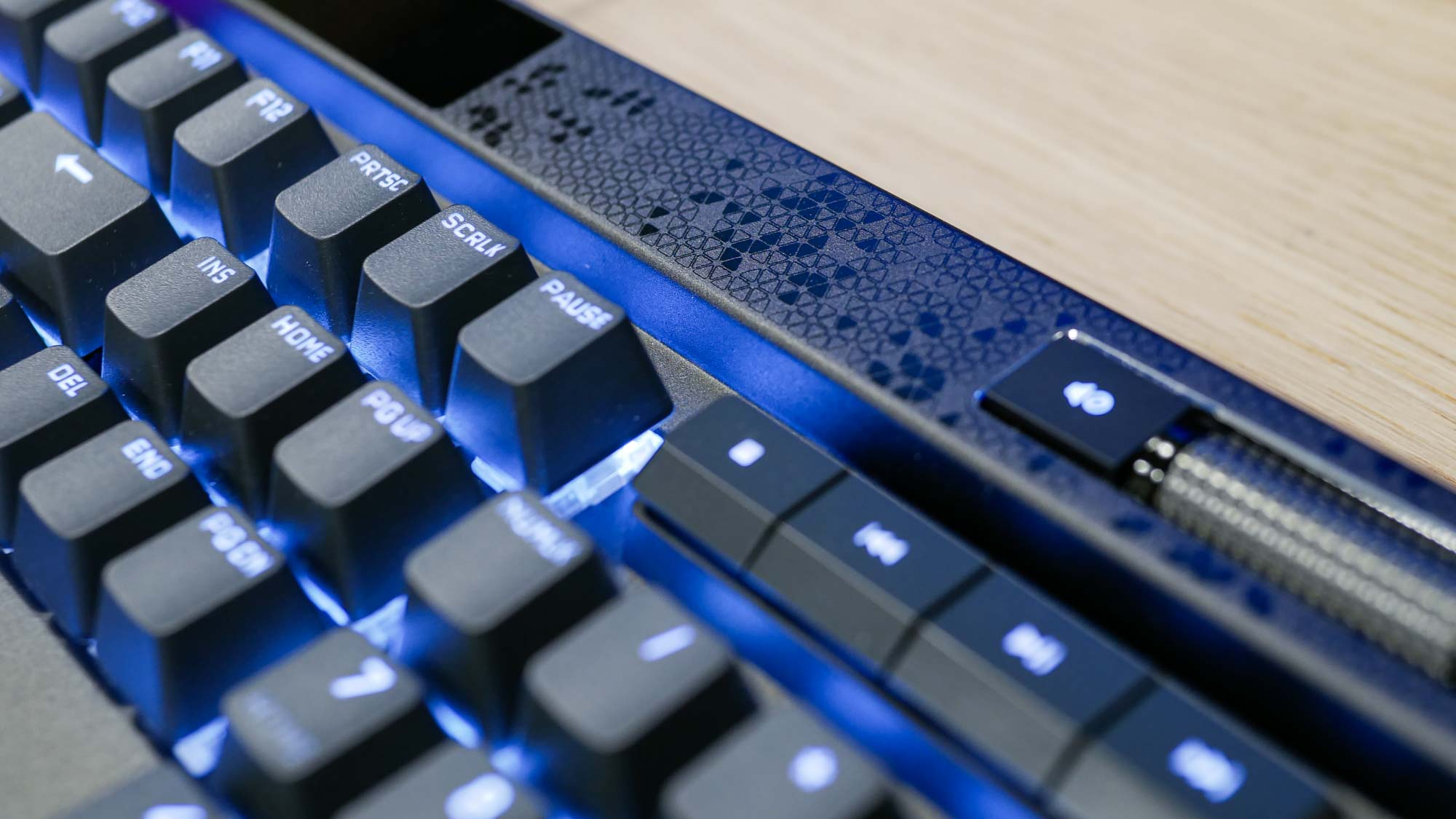
Media controls and a textured volume wheel reside above the Numpad on the right, while controls for profiles, keyboard brightness and a Windows-key lock rest on the upper-left side. Like the K70 RGB Pro, there’s a Tournament Mode switch on the back of the keyboard. I’ll go over the latter in the features section shortly.
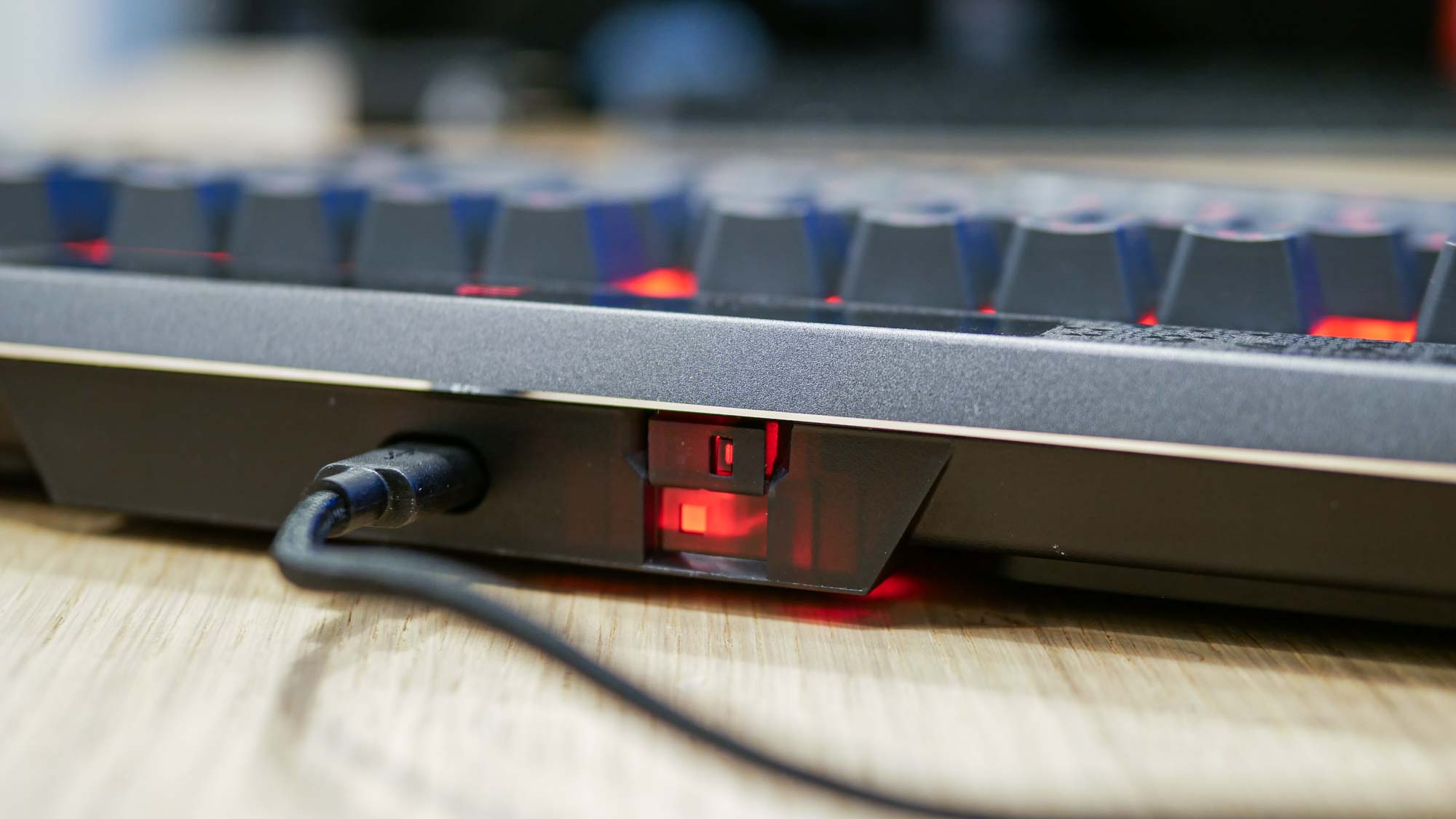
Like the K70 RGB Pro, the K70 Max comes with a wrist rest that magnetically attaches to the bottom of the keyboard. I wasn’t a fan of that previous wrist rest since it was just a flat, uncomfortable piece of plastic with weak magnets. The new wrist rest has comfy magnetic memory foam and its magnetic connection is much stronger — even staying attached to the keyboard when you lift it. I typically don’t care for wrist rests, but this peripheral made me a convert.
Corsair K70 Max review: Keys
The K70 Max features Corsair’s new MGX magnetic mechanical switches. While they’re linear switches, they function much differently. I’ll save that for the next section, but suffice it to say that these linear switches allow for smooth keystrokes that are ideal for gaming. I personally prefer tactile switches since I like the bump you feel when hitting the actuation point, but linear switches are good if you want a smooth keystroke without the bump.
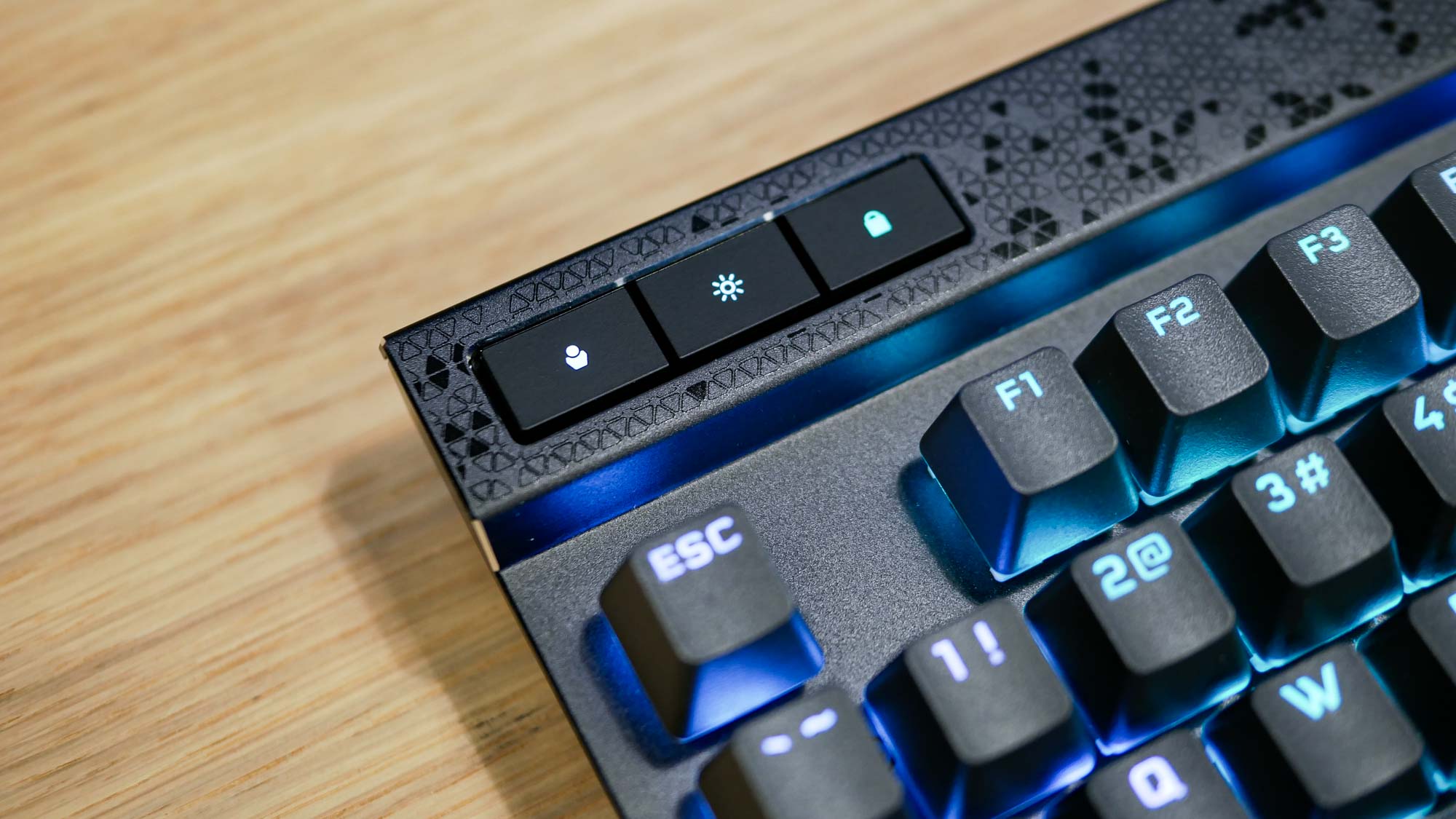
The 1.5mm thick double-shot double shot PBT keycaps also help enhance the typing experience. The rough texture and slight indentation on each key feel nice to type on and make the product feel more premium. On typingtest.com, I scored 53 words per minute with 90% accuracy, which is about my usual average.
Corsair K70 Max review: Features
The K70 Max might look like a regular full-sized Corsair keyboard. However, the company’s MGX magnetic mechanical switches differentiate it from its predecessors and arguably make it the best K70 switch the company has ever released.
Unlike a normal keyswitch, which uses conductive metal plates that come into contact with one another when keys are pressed, MGX switches use magnets. When the magnet reaches a pre-determined distance, the keypress is registered. Since the actuation point is determined by a moving magnet instead of a physical mechanism, you can set the actuation point on a per-key basis.
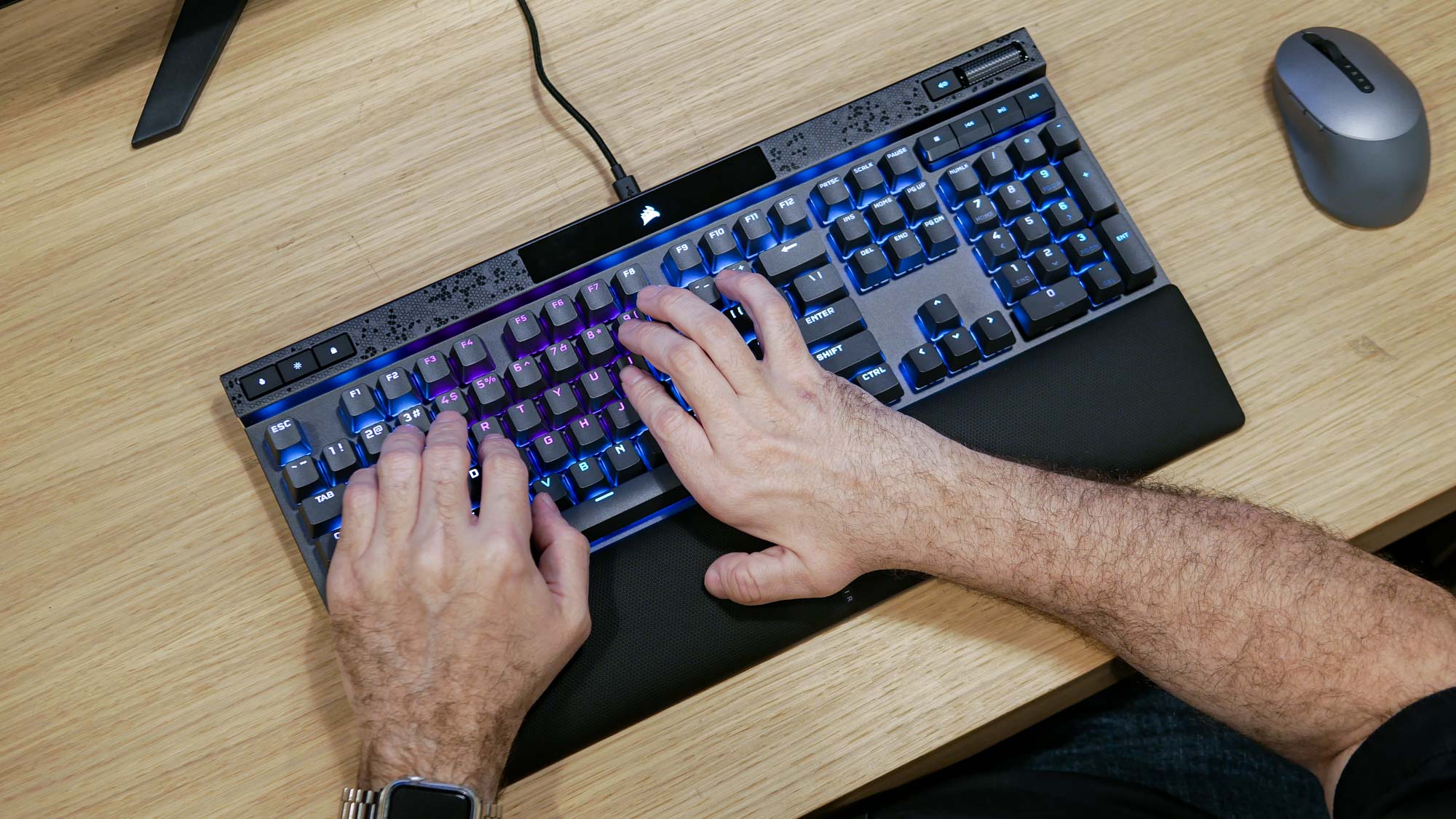
Out of the box, the keys have an actuation point of 2.0mm and a total travel distance of 4.0mm. You can set the actuation point between 0.4mm and 3.6mm in 0.1 increments via the iCUE application. Within the app, you can set two different actuation points for the same key — both of which can have two different functions.
For instance, you can set an actuation point of 0.4mm on the W key to make a video game character walk and then set an actuation point of 3.6mm on the same key to make the character run. This is similar to how some games on console have pressure-sensitive actions depending on how hard you press a button. To put it bluntly, the ability to set two different action points on a single key is pretty mind-blowing. The fact that it works so well is just icing on the cake.
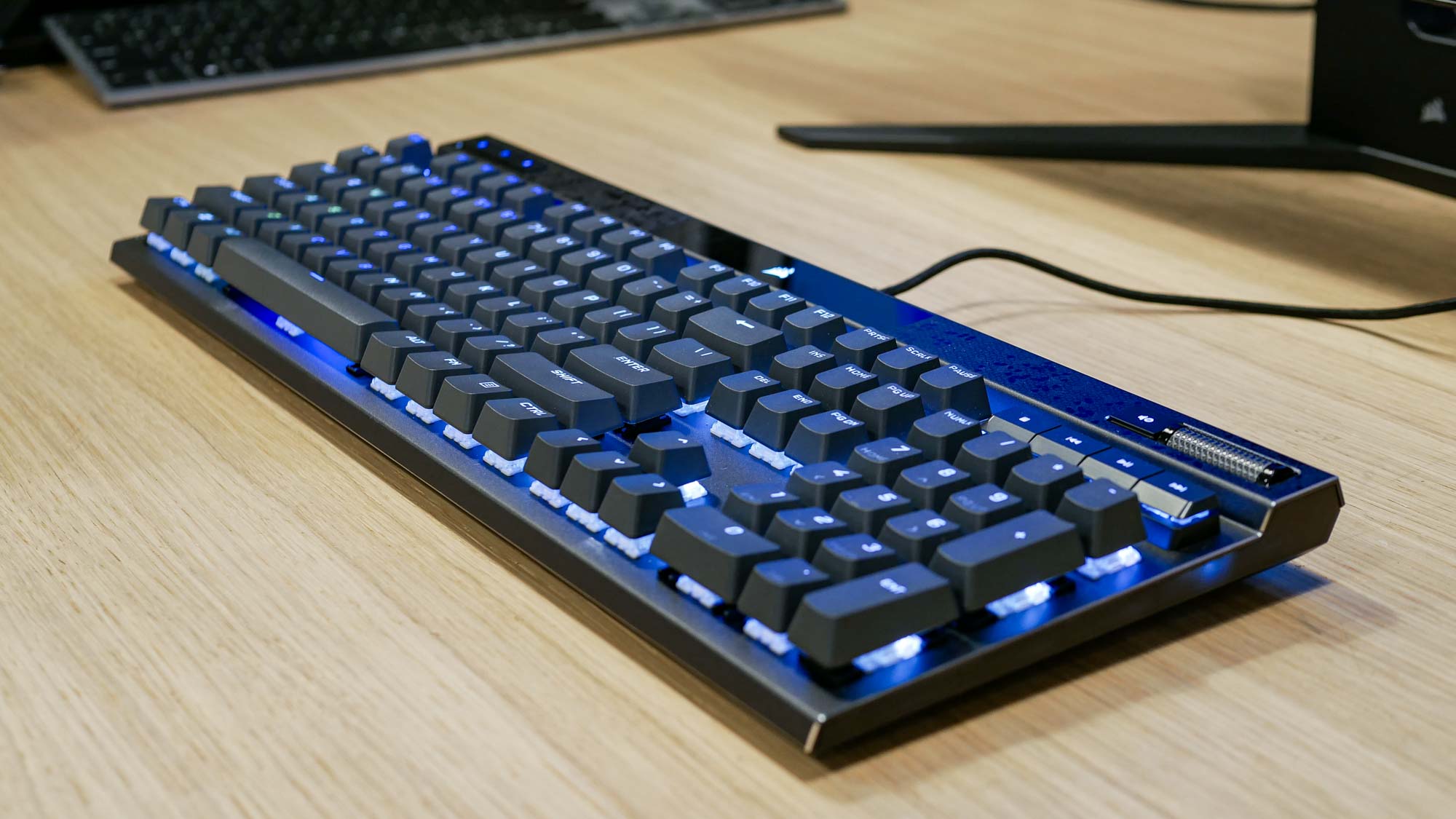
Since we’re on the subject, the Corsair Utility Engine (iCUE) is Corsair’s proprietary gaming peripheral software. As we said in our K70 RGB Pro review, Corsair’s application is one of the most complex and nuanced tools out there — even more than Razer Synapse. You can reprogram keys, create macros, adjust the RGB lighting, link profiles with individual games and apps, and much more. Thankfully, Corsair has numerous handy tutorials that show you how iCUE works if you’re feeling lost.
Lastly, I want to discuss Tournament Mode — which was also featured on the K70 RGB Pro. Flipping a switch on the back of the keyboard disables RGB lighting, profiles and custom macros — which is all great (and perhaps necessary) for professional gamers who have to adhere to a tournament’s rules. Also, you can detach the keyboard’s USB-C cable for easier store and transport.
Corsair K70 Max review: Performance
I’m a diehard controller user even when playing PC games. With that said, I had a great time using the K70 Max on games like Doom Eternal and Cyberpunk 2077. Thanks to the responsive linear keyswitches, dashing through a demon-infested Earth in the former or mowing down cyborg hooligans in the latter felt smooth and precise.
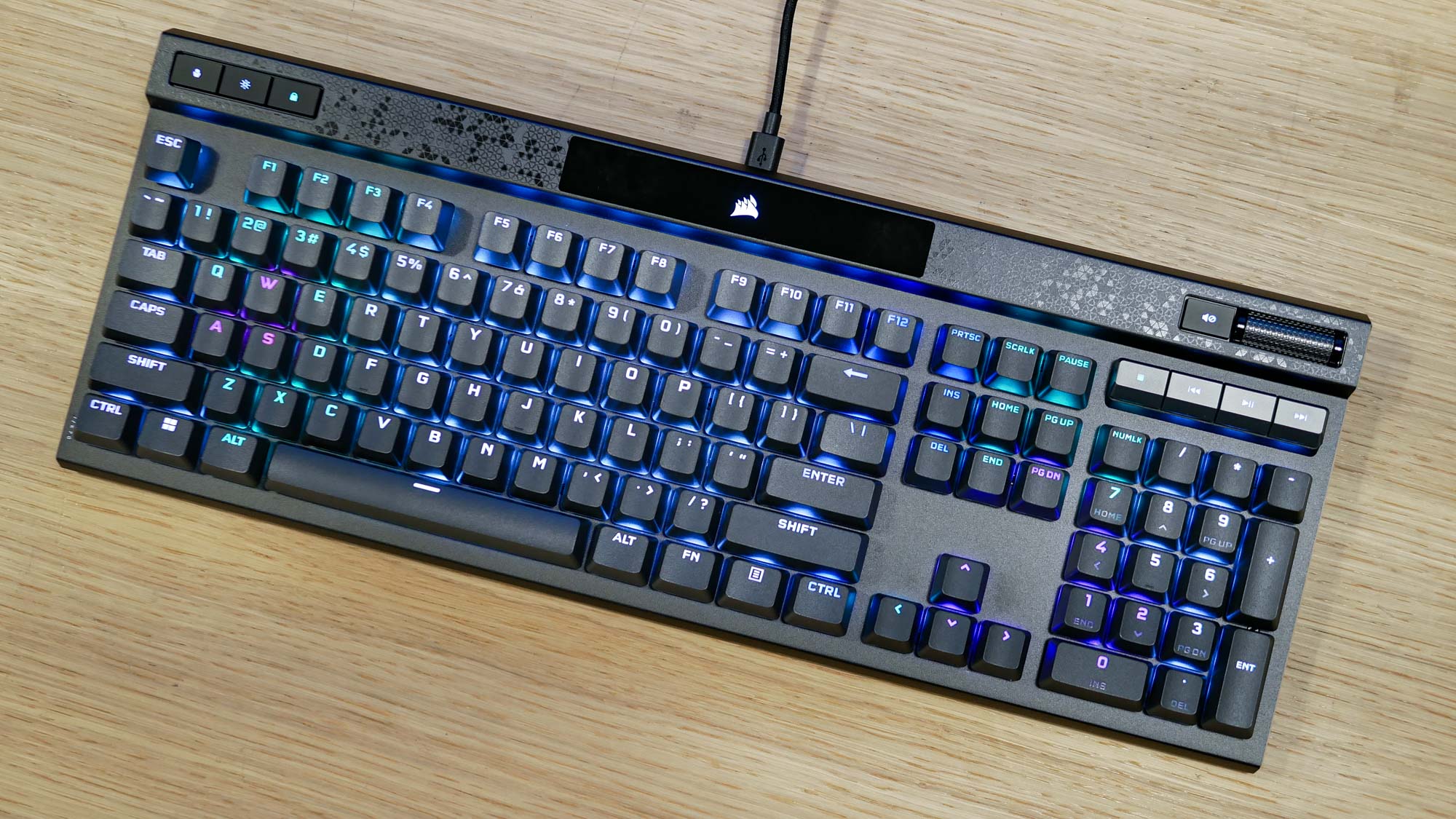
I also set different actuation points on the W key for walking and jumping in both games, which made it easier to play for a controller snob like me. I can’t say whether or not the K70 Max is better for certain genres over others, but given its overall excellent performance, I believe it’s well-suited for hardcore PC players.
Corsair K70 Max review: Verdict
I’m not being hyperbolic when I say the Corsair K70 Max is one of the finest gaming keyboards out there. Its unique magnetic switches and the ability to program two different actuation points per key is mindblowing and should allow you to go nuts programming different functions. This is one of those features you need to try first-hand to truly appreciate — but trust me when I say these MGX magnetic switches are a game-changer for Corsair keyboards.
Beyond its unique switches, the K70 Max has all the best features of Corsair keyboards. It’s a sturdy, fetching device that’s excellent for both typing and gaming. Though it’s pricey at $230, this peripheral is worth every penny for those who love mechanical keyboards.
If that price is too steep, then I suggest the K70 RGB Pro, which costs $129 on Amazon at time of writing. Though it doesn’t have magnetic switches, it’s virtually identical to the K70 Max in terms of typing experience and performance.

Tony is a computing writer at Tom’s Guide covering laptops, tablets, Windows, and iOS. During his off-hours, Tony enjoys reading comic books, playing video games, reading speculative fiction novels, and spending too much time on X/Twitter. His non-nerdy pursuits involve attending Hard Rock/Heavy Metal concerts and going to NYC bars with friends and colleagues. His work has appeared in publications such as Laptop Mag, PC Mag, and various independent gaming sites.
